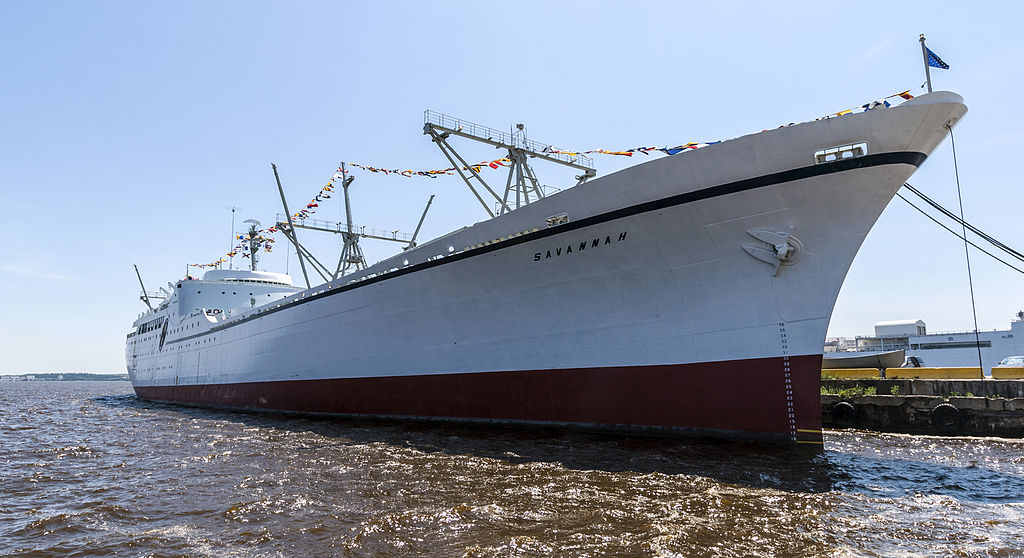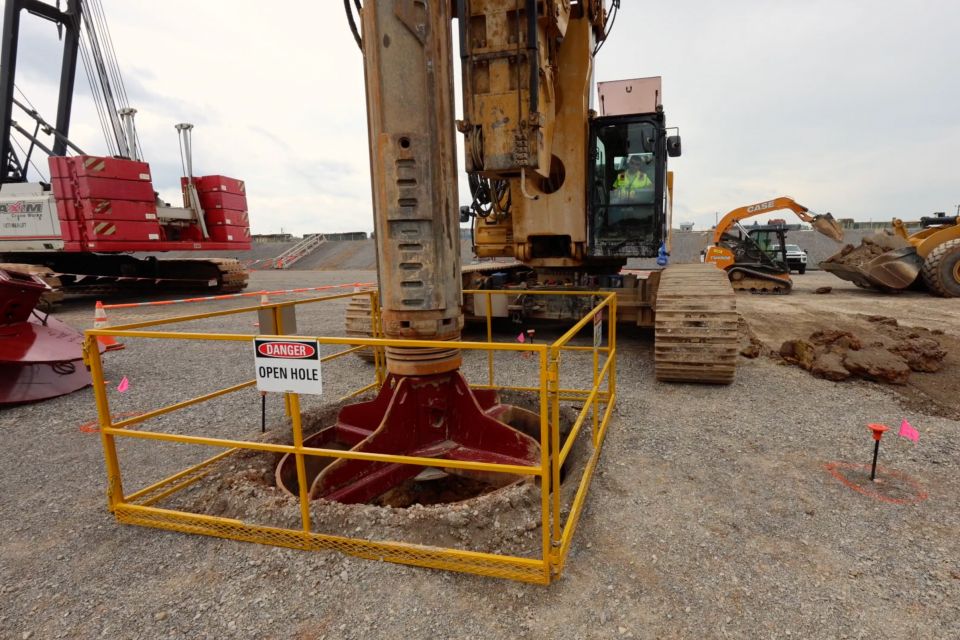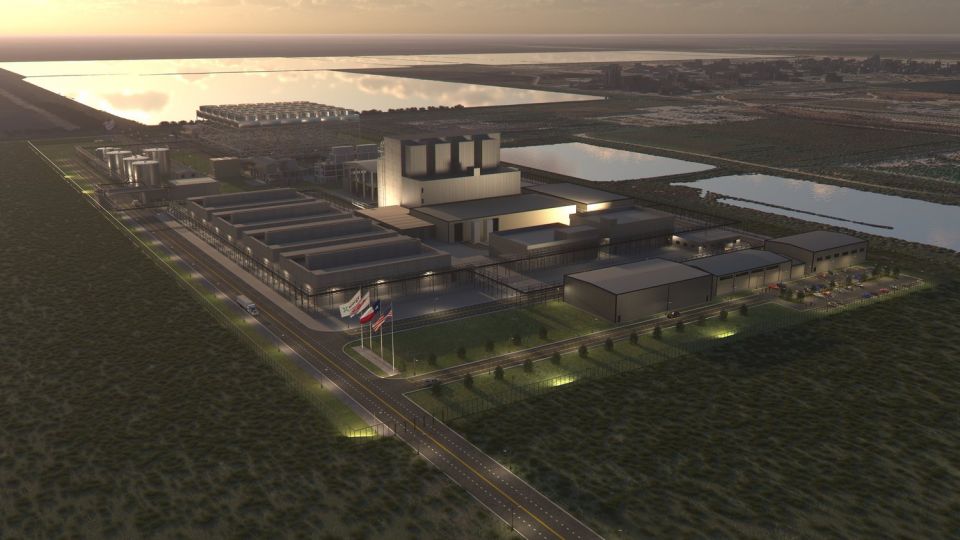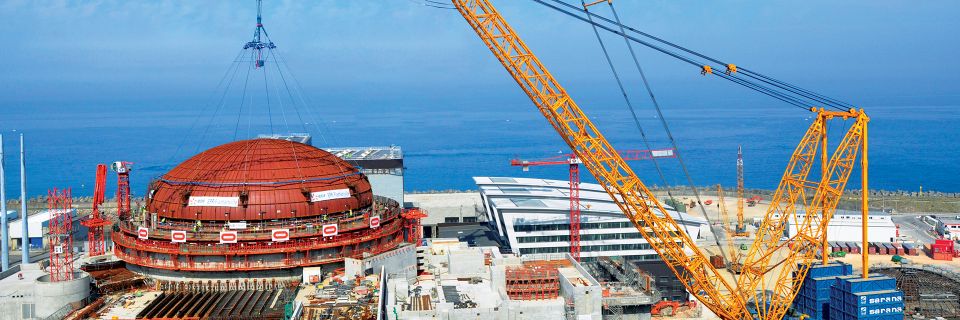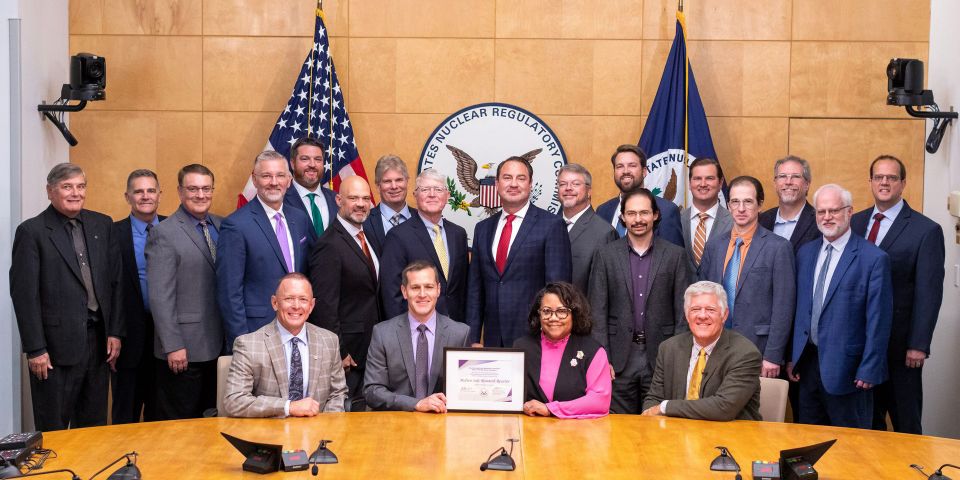The problem: The article neglects any mention of nuclear power, but states that there are no commercially viable technologies available to begin reducing carbon emissions. "We basically have five to seven years to figure out what the fuel of the future is for these giant vessels plying around the globe, and that has everybody with their hair on fire," says Joshua Berger, founder of Washington Maritime Blue, a strategic alliance focused on maritime sustainability.
Related, the article quotes a Reuters article that states, “At the current rate, the nonprofit International Council on Clean Transportation projects that 2050 emissions will be 130 percent higher than 2008 levels.”
What are the options? Electric vessels are being considered, but a typical container ship would need the equivalent of 70,000 Tesla Model S 85 batteries. That clearly is not viable, but battery power potentially could be an option for local vessels such as ferries and harbor tugboats.
The other option is liquified natural gas (LNG), but LNG emits greenhouse gasses, albeit 25 percent less than conventional fuels. LNG is not a permanent solution, but could help bridge the gap—the same way that the nuclear’s current land-based fleet of nuclear power plants should have their licenses extended to bridge the gap to advance reactors. Other options cited in the article, such as ammonia and hydrogen, would require up to five times as much fuel to operate the current fleet of shipping vessels.
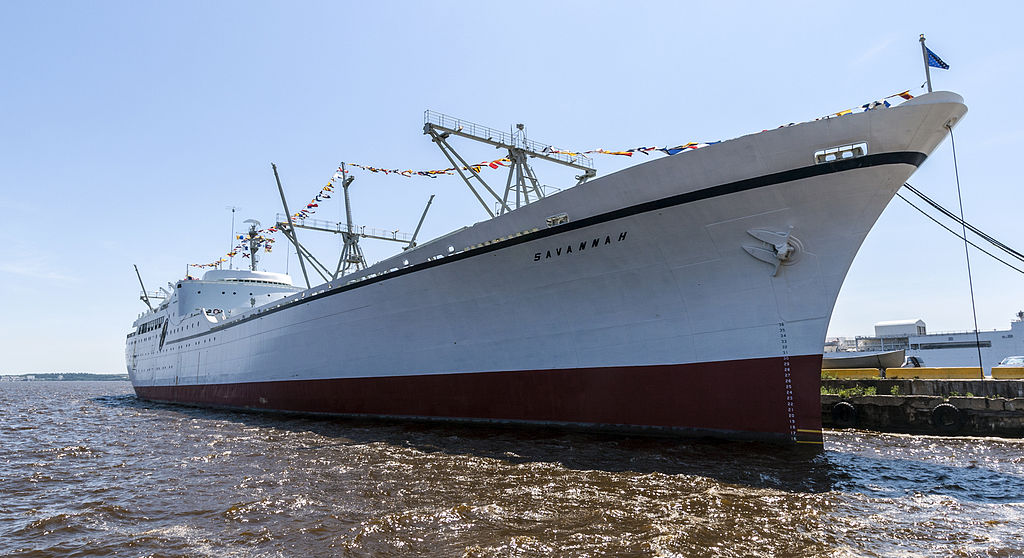
The nuclear-powered merchant ship NS Savannah. Source: Acroterian
May we suggest nuclear? Nuclear propulsion for merchant vessels has been around since 1959, when it was demonstrated by the U. S. merchant ship NS Savannah. The Savannah was put into service in 1964 and retired in 1972. Also, Russia (and previously the Soviet Union) has built a dozen nuclear-powered ice-breakers.
The International Maritime Organization (IMO) is considering nuclear power for merchant vessels, according to James Conca, a columnist for Forbes and Nuclear News. "As expected, the IMO is considering small nuclear reactors, similar to those that have made our nuclear Navy so successful," Conca says in his article, International Marine Shipping Industry Considers Nuclear Propulsion.
The U.S. Navy has more than 100 nuclear reactors powering 86 submarines and aircraft carriers, producing electricity, heat, and propulsion. Conca notes that a Navy aircraft carrier powered by fuel oil would use more than 125 million gallons to circumnavigate the Pacific Ocean once. In contrast, a nuclear-powered aircraft carrier could use a sphere of uranium the size of a grapefruit to keep the vessel active for 20 years or more.
Conca points to research done by Penn State that concludes that in addition to fuel savings, nuclear-powered ships go about 50 percent faster than oil-fired ships of the same size. For the shipping industry, the increased number of runs per year, and the increased profits, appear to more than offset the increased operational costs of nuclear.
Conca also references existing IMO legislation for nuclear-powered ships, including Chapter VIII of the International Convention for the Safety of Life at Sea 1974, which gives the basic requirements.
Advanced designs: Today there are advanced reactor designs, including one by a small startup, Core Power, that could be deployed in a decade. Nuclear News reported last fall on the company’s application to the Department of Energy for a cost-share award as part of the Advanced Reactor Demonstration Program. The company’s prototype modular marine molten salt reactor concept as a zero-carbon energy source needs no refueling during its lifetime and could be ready by 2030.
The Axios article says that the maritime industry needs to act fast. Nuclear propulsion may be its only option.
